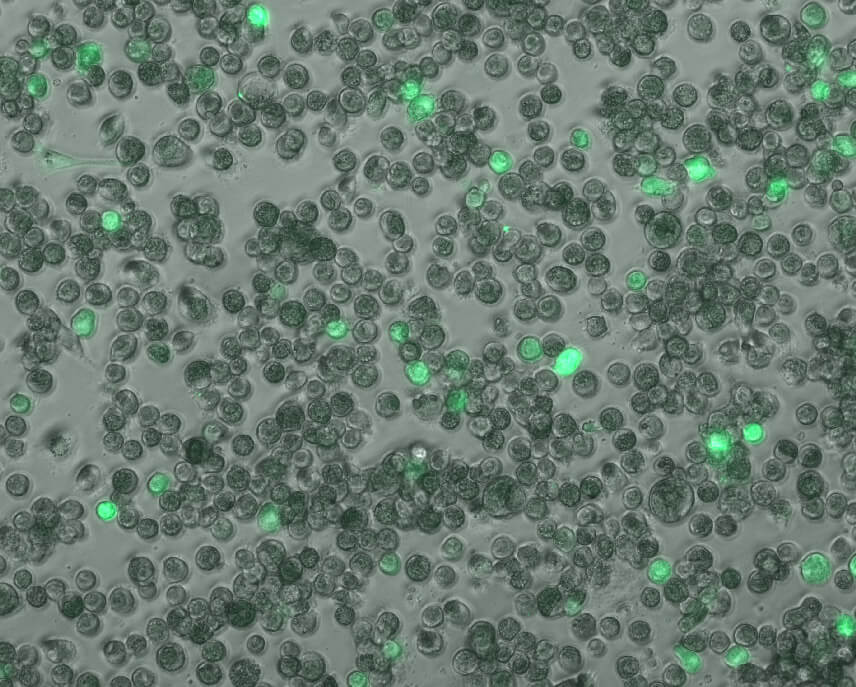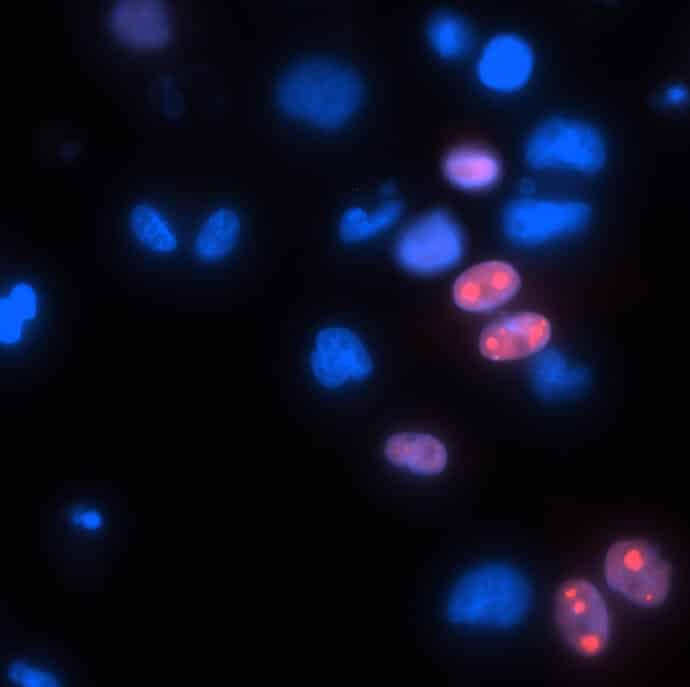New discoveries about how the result of infection with a virus from the herpes family is determined and where dormant viruses may hide in the body

"He who wants peace will prepare for war," advised statesmen Vegetius, the Roman writer of the 4th century AD. The power of this advice is beautiful not only in the arena of international relations but also in the arena of the fight against viruses. In response to a virus invasion, the cells in our body secrete proteins called interferons, which warn their neighbors of the impending danger and even cause them to produce antiviral proteins that protect them from infection. MNew research of the scientists of the Weizmann Institute of Science shows that even in times of peace there are cells that express high levels of anti-viral defense proteins and that these proteins are able to make the cells more immune to a hostile takeover by viruses. In fact, the scientists showed that the higher the levels of defense proteins in the cell were normally, the greater the cell's chances of preventing a viral takeover.
Viruses need a living cell to multiply and spread themselves. When a virus invades a cell, an active infection usually occurs - the virus takes over the cell's protein production systems and starts making more and more copies of itself, on the way to destroying the cell and spreading the new virus copies to other cells. However, sometimes viruses enter the cell without active infection occurring. In these situations, even though they failed to take over the production systems of the cell, viruses may remain in the cell in a dormant state. Viruses from the herpes family, for example, are notorious for their unique ability to hide in body cells in a dormant state. But how is the result of the infection decided - that is, will an invading virus succeed in taking over the cell and enslave it to its needs or will it remain dormant and wait for an hour of fitness?
This question is the focus of a new study led by Dr. Michal Schwartz from the research group of Prof. Noam Stern-Ginosar in the department of molecular genetics at the institute. To put this question to the test, the research team focused on the human cytomegalovirus (CMV), a virus of the herpes family that infects most of the population. As befits a virus from the herpes family, this virus waits dormant in the body of the carriers and may erupt at any stage of life. These outbreaks often occur among immunosuppressed people, for example organ transplant recipients or chemotherapy patients. In addition, pregnant women may transmit the virus to their fetuses, an infection that can cause severe disease outbreaks in babies.
The scientists followed for 144 hours two groups of cells of the immune system that were infected with the virus - macrophages and their mother cells - and sequenced the RNA molecules in these cells at the single cell level at different time points after infection. Since RNA molecules carry the recipes for the production of the proteins in the cell, sequencing revealed to the scientists which proteins are produced in each cell at each stage of the infection.
""Viruses that hide in the body in a dormant state are an existential threat to immunocompromised patients and organ transplant recipients"
"As can be expected, in the first hours after infection, the cells produced their own cellular proteins," explains Dr. Schwartz, "however, after a few hours, a split occurred: some of the cells continued to produce only their own proteins, while others began to produce two proteins of the virus, whose role to duplicate its genes and allow its spread in the body. This step was irreversible: that is, from the moment cells expressed those first two proteins of the virus, it was not possible to stop its takeover of the cell."

The scientists went back and examined how the cells that had an active infection differed from the cells in which the virus only remained dormant, and therefore continued to produce self-proteins. They discovered that even before exposure to the virus, the cells in the samples differed from each other in the amount of antiviral defense proteins they produced, and that the active infection occurred in cells where fewer antiviral defense proteins were produced, while in cells where more defense proteins were produced, the virus remained dormant.
The intracellular immune system activated by the secretion of interferon is known as the first line of defense against viral invasion. This array is able to activate hundreds of genes that are essential to the fight against invaders - not only in the infected cell but also in the cells around it. It now turns out that the protective proteins that are formed in the cell following the secretion of interferon play a significant role in the cell even without a viral infection and without interferon being secreted: their high levels in the routine may "vaccinate" cells against active infection. Moreover, the findings are a possible explanation for the mystery in the research field of herpes viruses. Until now, it was known that the main lodge for dormant cytomegaloviruses is in stem cells in the bone marrow, but the reason for this was unknown. The new findings indicate that the stem cells may be harboring dormant viruses, as they routinely produce more protective proteins compared to mature cells that have undergone complete differentiation, such as macrophages. Moreover, the study reveals that even mature cells such as macrophages can undergo both active and inactive infection. This discovery breaks the dichotomous division between cells undergoing active infection and cells where the virus remains dormant, and raises the possibility that many cells in our body undergo infection of both types - and therefore constitute unknown reservoirs of dormant viruses.
"Viruses that hide in the body in a dormant state are an existential threat to immunosuppressed patients and organ transplant recipients," says Prof. Stern-Ginoser, "the basic understanding of the mechanisms that cause viruses to erupt or remain dormant is the key to the future development of effective treatments for those patients. As the understanding of how the virus can be caused to erupt or how to return it to a dormant state is solidified, it will be possible to better prepare patients for organ transplants or treatment with immunosuppressive drugs. I am hopeful that in the future we will be able to translate the knowledge about the self-defense mechanisms of the cell and the possibility that additional cells harbor dormant viruses, in order to develop an effective response in the clinical field."
Also participating in the study were Dr. Miri Schneider, Aharon Nachshon, Tamar Arzi, Yarit Kitzberg, Roi Levi Samia and Michal Lavi, from the department of molecular genetics at the institute; Dr. Rotam Quint and Dr. Reuven Zabri from the Hadassah Medical Center of the Hebrew University.
Science books
Between 50% and 90% of the world's population will be infected with the human cytomegalovirus during their lifetime. Today, after many efforts to eradicate outbreaks of the virus after transplants, approximately 5% to 10% of bone marrow transplant recipients have an outbreak that may turn into a serious disease.
More of the topic in Hayadan:
